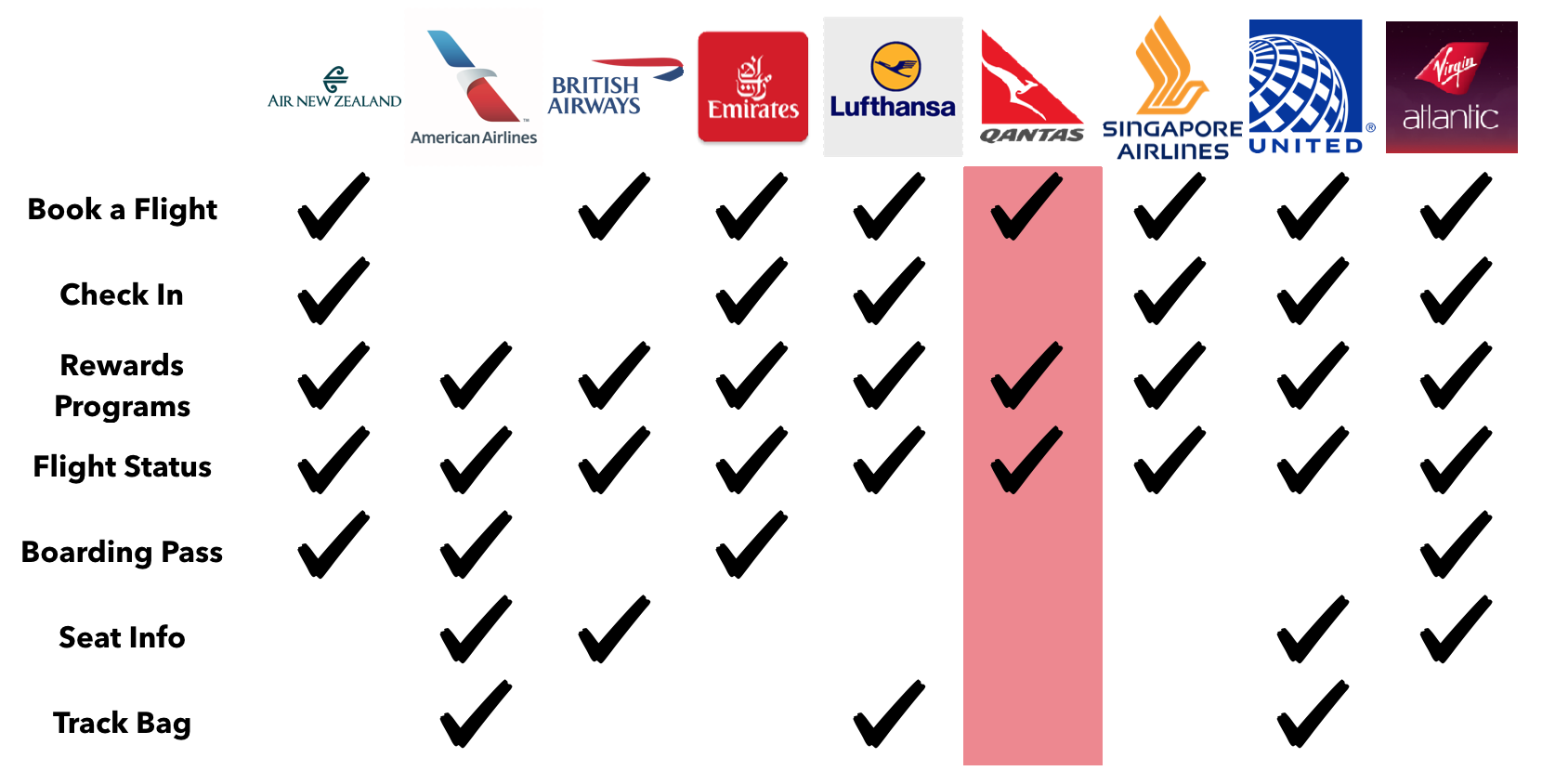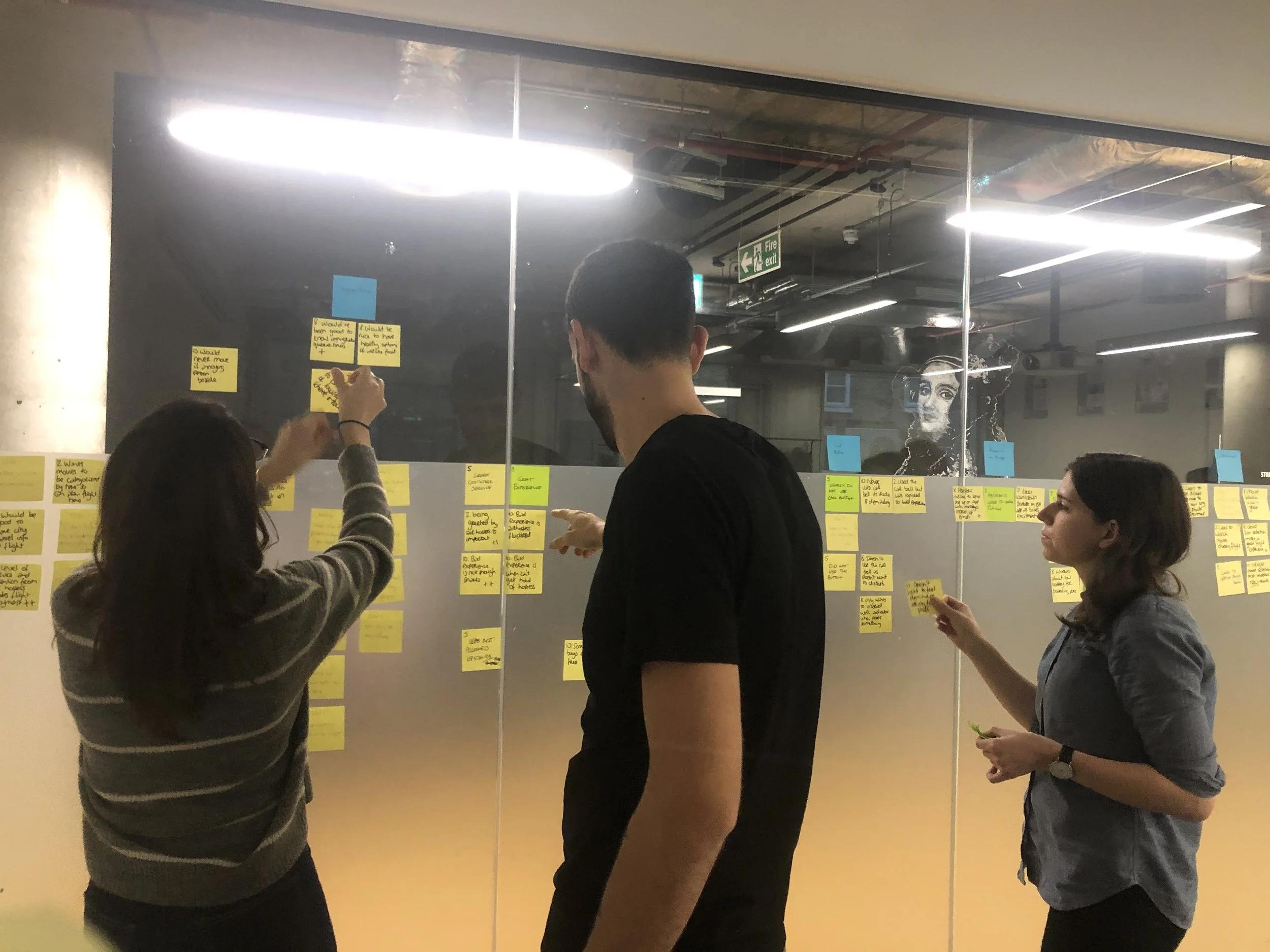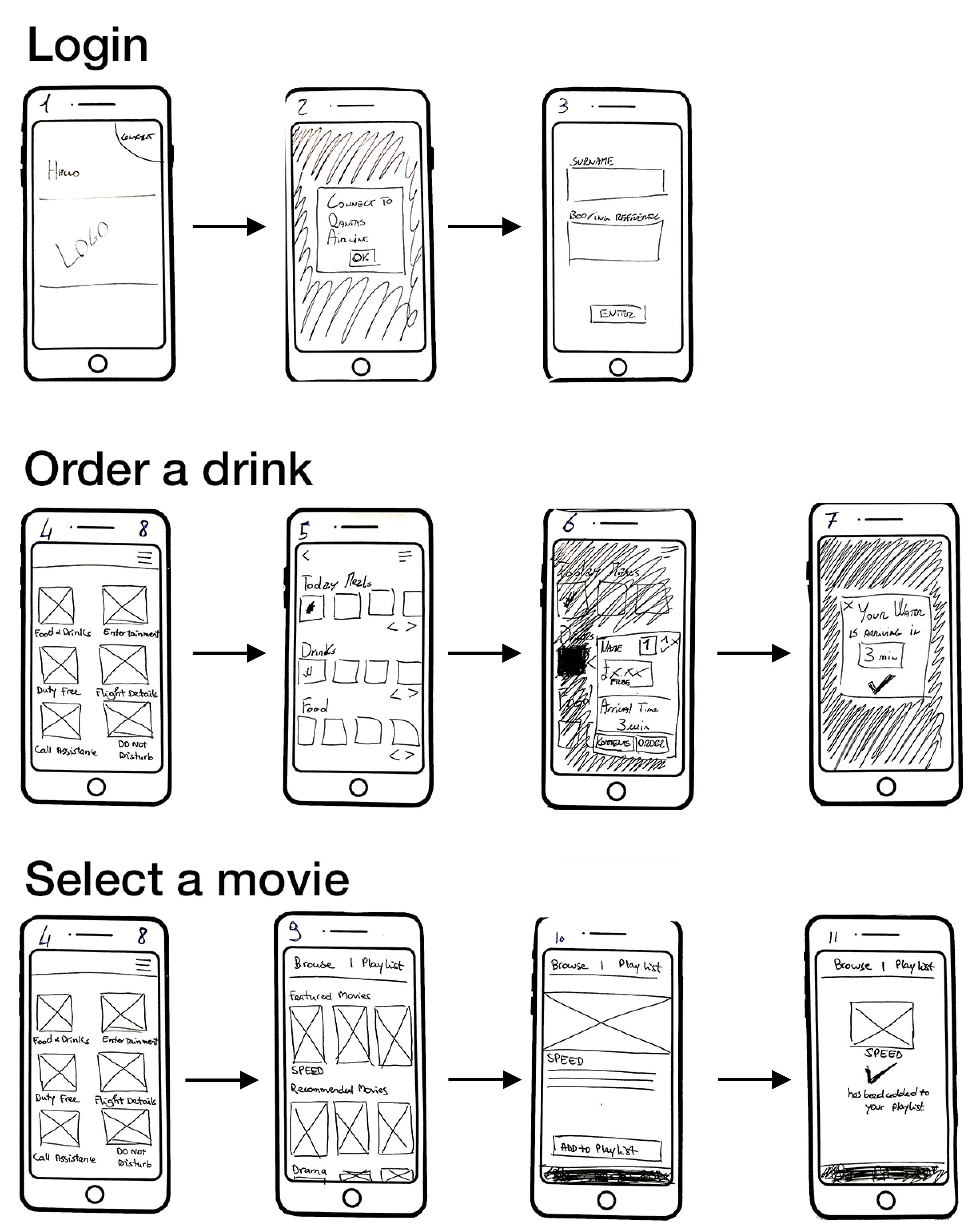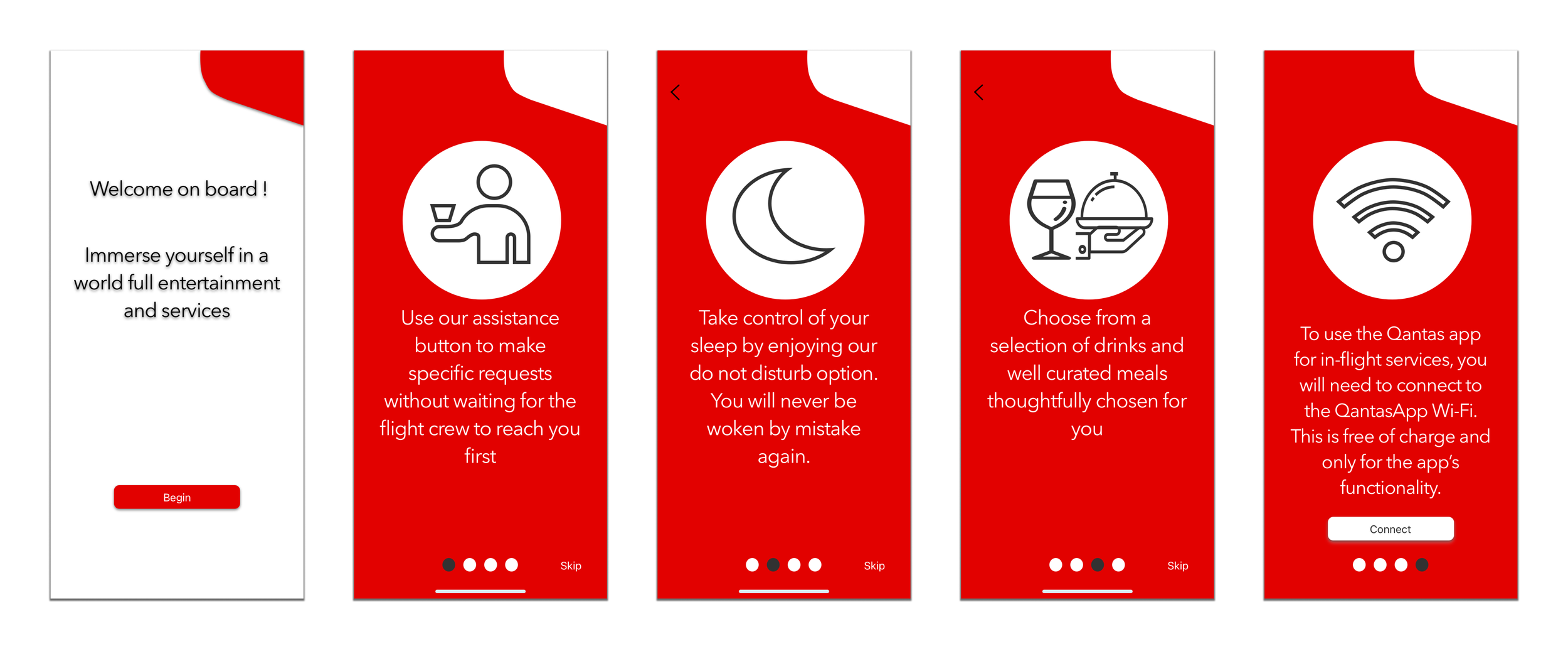Qantas airlines
Group Concept Project | Native Mobile App | 2 Week Sprint
The Brief
Airline apps are most often used by fliers with everything they need before and after a flight. They make the check-in process easier, allow to schedule flights while away from the computer, and substitute printed boarding passes.
For this concept project, I worked with a team on an app that would make in-flight services for Qantas Airlines available to passengers on their mobile devices.
We were provided a list of in-flight services that the “client” was interested in potentially making available in the app:
Flight attendant services (food and drink service, summoning an attendant)
Entertainment (movies, music, games, maps)
Payment (paid for ‘roaming’ wifi, duty free shopping)
Read the extended case study on Medium.
Discovery Phase
Competitive analysis
We examined the Qantas app and other major airline apps, noting when and how the features in the brief were used.
Most brief features used before a flight were available.
Features used in-flight were rarely available.
User Research
We conducted surveys and interviews with frequent fliers to walk through their last long-haul flight in detail, starting from the planning of their journey and ending when they left their flight’s arrival airport.
Users tended to confirm that the pre-boarding features offered by most airline apps successfully made the “before flight” process much smoother.
The pain points that did emerge all had to do with in-flight experiences.
Guilt about requesting a flight attendants’ help, which often led to them waiting a long time to get their needs met.
Prioritising sleep and not wanting to be interrupted.
Frustration with navigating movie selections on seat back screens.
Defining the Problem
Users needed a way to manage their in-flight experiences themselves, because they did not want to rely on the attendant walking by at long intervals.
Our prototype for a Minimum Viable Product would therefore include all features that allowed for:
Snack and drink requests, as these were what passengers often had to wait for a flight attendant to walk past to ask for.
In-app media, making movie selections easier to browse and navigate.
Developing Ideas
initial prototype
In a design studio, we created a paper prototype allowing users to:
Sign in and connect to WiFi.
Request and pay for a beverage.
Select a movie to play on the seat-back screen.
testing and feedback
What Worked:
Once signed in, users found it easy to navigate the menus to find and purchase the beverage they were asked to order and movie they were asked to play
Users felt a sense of gratification from the confirmation and expected wait time of their drink request.
What didn’t work:
Since users were not used to using an airline app while on the plane, the process of signing in and connecting to wifi in order to use the app’s services was confusing.
They were prompted to believe that they were either asking to buy or being given free access to in-flight wifi, which was misleading and likely would have caused drop-off in a real in-flight scenario.
adding onboarding screens
We introduced onboarding screens to explain the app’s services and WiFi requirement, setting clear user expectations in our next round of testing.
Delivery
I later returned to the project to update the visual design and make it consistent with Qantas branding that is currently used for their app which provides other pre-boarding services.
Onboarding
Food and Drinks
Entertainment
Style Guide
next steps
The purpose of this particular sprint was to focus on the passenger’s experience and conduct user research and testing with passengers as the sole users.
In order to implement the features that would benefit passengers, it would be necessary to also understand how the flight crew would be affected by receiving requests.
To do this, we would need to do user research and testing with flight attendants. Journey mapping to understand their jobs and find their pain points would help to ensure them an improved experience that minimises stress.

















